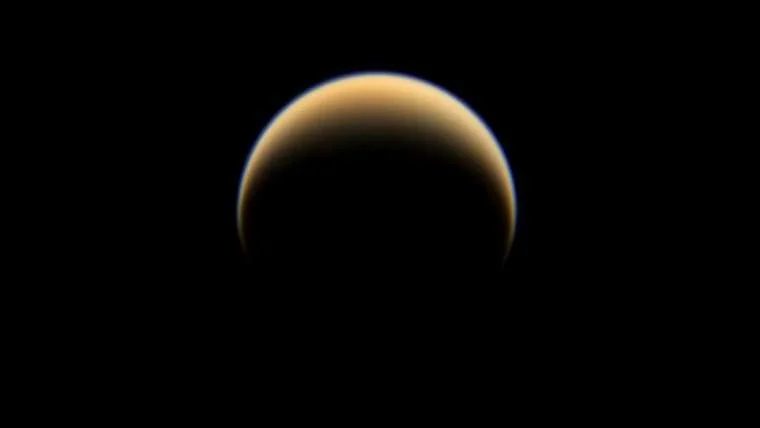
Titan’s Wobbling Atmosphere: A Mystery Unfolds on Saturn’s Moon, Potentially Impacting NASA’s Dragonfly Mission
Scientists are scratching their heads over a newly discovered, baffling phenomenon on Saturn's moon, Titan: its atmosphere appears to be wobbling independently of its surface rotation, behaving like a giant gyroscope. This unexpected movement, connected to Titan's long seasons (nearly 30 Earth years each), has stumped researchers and adds another layer of intrigue to this already fascinating world.
The discovery was made by researchers from the University of Bristol while analyzing data from the NASA-ESA Cassini-Huygens mission, which ended its 13-year study of Saturn and its moons in 2017. They focused on the symmetry of Titan’s atmospheric temperature field and found it wasn't centered on the moon's pole as expected. Instead, the atmosphere shifts in sync with Titan's seasons.

"The behavior of Titan’s atmospheric tilt is very strange!" said Dr. Lucy Wright, lead author of the study. "Titan's atmosphere appears to be acting like a gyroscope, stabilizing itself in space." She suggests a past event might have knocked the atmosphere off its spin axis, causing the wobble.
Professor Nick Teanby, co-author and planetary scientist at the University of Bristol, added that the stable tilt direction, unaffected by the Sun or Saturn, is particularly puzzling: "What’s puzzling is how the tilt direction remains fixed in space, rather than being influenced by the Sun or Saturn. That would’ve given us clues to the cause. Instead, we’ve got a new mystery on our hands."

This discovery has potential implications for NASA's Dragonfly mission, a drone-like rotorcraft scheduled to reach Titan in the 2030s. Dragonfly will face strong winds during its descent, moving much faster than the surface's rotation. Understanding the atmospheric wobble is crucial for accurate landing trajectory calculations. Researchers say that the atmospheric tilt affects how the payload will be carried through the air, therefore this research can help engineers better predict where it will touch down.
Dr. Conor Nixon, a planetary scientist at NASA Goddard, emphasized the value of the Cassini archive: "Our work shows that there are still remarkable discoveries to be made in Cassini’s archive... The fact that Titan’s atmosphere behaves like a spinning top disconnected from its surface raises fascinating questions – not just for Titan, but for understanding atmospheric physics more broadly, including on Earth."

Titan continues to surprise us with its Earth-like features, including a rocky surface, lakes and rivers of methane and ethane, and a dense, carbon-rich atmosphere. This latest discovery only reinforces the view of Titan as a unique and active world.
What do you think could be causing this atmospheric wobble on Titan? How might it affect future missions?